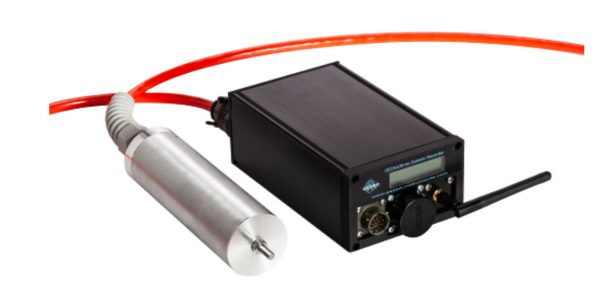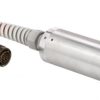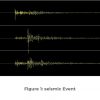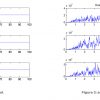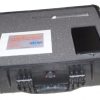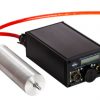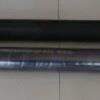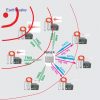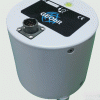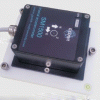The GEObit provides compact solutions for quick deploy seismic stations based on GEOThree digitizer/recorder and C100 sensor. The GEOThree recorder has 3 input channels, and integrated sensor electronics. The digitizer is based on a powerful, wide dynamic range 32bit delta-sigma analog-to-digital converter, with very low noise characteristics and excellent power supply rejection. The sampling rate can be set to 50, 100, 200, 250, 500 and 1000 samples per second. The sensor response is 10sec – 98Hz. The data are stored into removable microSD card. Ultra low power consumption allows over one month of operation if getting powered from an ordinary 12V/65Ah lead-acid battery.
The LCD, displays the State-of-Health, time and date and other information related to the instrument’s operation. The digitizer is intended for installation in harsh environments. The instrument supports embedded SEEDlink server for real time data telemetry.
Applications
- Aftershock studies
- Local and regional seismicity monitoring
- Seismic Tomography
- Reservoir monitoring
- Induced seismicity monitoring
- Geothermal monitoring
- Structural monitoring (Dams, Bridges, Ancient Castles)
Here we present the instrumentation which have been used in several passive tomography projects as well as several micro-seismicity and induced seismicity projects, and explain why we propose the use of this kind of equipment.
So why chose a GEObit unit?
1. Why wide band sensor?
At micro-seismicity monitoring experiments and applications the seismic events usually have a magnitude from –2R, up to 4R, and their frequency spectrum is into the band 0.8Hz to 20Hz. So, a wide band seismometer with the range of at least 0.5Hz(2 sec) up to 30 Hz is necessary to be used for the recording of such seismic events. In micro-seismicity monitoring , we are using sensors with recording bandwidth from 0.1Hz to 100Hz in order to record the seismic events with the maximum quality. The low frequency response gives us the ability to calculate moment tensors as well.

